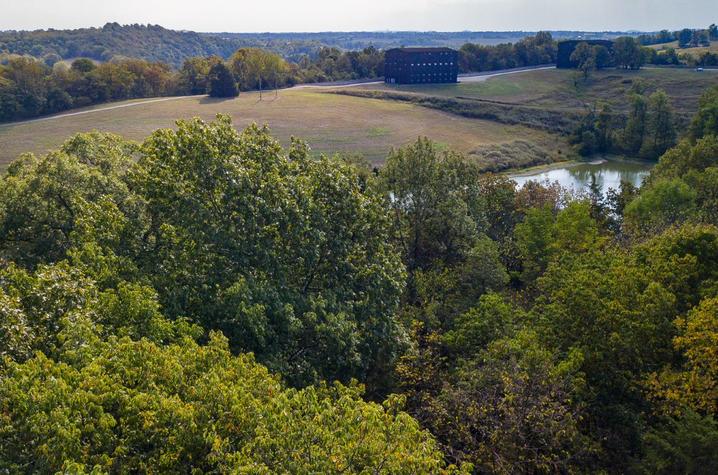UK Partners With Bourbon Industry Leaders to Map White Oak Genome
LEXINGTON, Ky. (Oct. 17, 2019) — Bourbon isn’t bourbon without the mighty white oak. Distillers have been aging bourbon in oak barrels as far back as the Roman Empire. Oak barrels give bourbon its unique caramel, vanilla, nutty and toasted flavors. Kentucky distillers rely especially on the white oak. But what if disease hits the species? How would industry professionals protect it? The University of Kentucky College of Agriculture, Food and Environment is partnering with Maker’s Mark Distillery Inc. in Loretto, Kentucky, and Independent Stave Company to research the DNA of the white oak.
“This research is for the greater good of the industry and the entire Eastern forest,” said Seth DeBolt, director of UK’s James B. Beam Institute for Kentucky Spirits. “We’d like to get a reference map for the white oak genome. We’ve identified a tree at the Maker’s Mark Distillery on Star Hill Farm as a gorgeous representative specimen of the species.”
This particular tree, known as “46 Tree,” is hundreds of years old. The team is already collecting grafts and acorns from the tree to begin the research.
By studying the tree’s DNA, researchers will be able to identify subtle differences that exist within a species. DeBolt said it’s almost like looking at the white oak as an agricultural crop and identifying key traits of that crop.
“The challenge here is to thoroughly understand a species, a really foundational, long-lived species that anchors the forest,” he said. “The goal is to answer questions such as: How does it live that long, in a single location? How does it maintain resistance to so many different diseases?”
Maker’s Mark Distillery and Independent Stave Company stepped in to fund this research that will ensure the production of new oak barrels for use by the entire industry for decades to come. The research team also includes individuals from the University of Tennessee, Pennsylvania State University and the U.S. Forest Service.
“American white oak is a key ingredient in bourbon-making. The color, and much of the flavor, of bourbon come from white oak barrels, so it’s critically important that this precious natural resource be managed and preserved for generations to come,” said Rob Samuels, chief distillery officer for Maker’s Mark Distillery. “At Maker’s Mark, we’re constantly stepping up our own environmental efforts, which have become a guiding principle for everything we do, and we’re proud to play a part in this research that will reach far beyond our home at Star Hill Farm and help this vital species thrive long into the future.”
Independent Stave Company has been crafting world-class oak barrels and cooperage products for more than 100 years. With multiple locations in North America, Europe, Asia, South America, Australia and Africa, they are committed to the health of the white oak.
“For 107 years, my family and our organization has depended on the white oak species for our livelihood,” said Brad Boswell, chief executive officer for Independent Stave Company. “We are excited to better understand its genetics to help ensure the next generation of Independent Stave Company stakeholders has a high quality, plentiful supply of this noble species.”
DeBolt said he hopes the initial stage is complete in about a year.
“I’m just really encouraged by these industry leaders coming together to ensure that our forests are healthy and productive for generations to come,” he said. “Can you imagine if we lost the white oak? It would be a fatal blow to an industry that means so much to Kentucky, to the world really. It is something that touches everyone.”
The James B. Beam Institute for Kentucky Spirits is the partnership between two iconic brands — the University of Kentucky and Beam Suntory. Comprising experts from various fields, the institute fosters a multidisciplinary, collaborative approach and is committed to developing the state’s workforce and providing opportunities for economic growth. In creating exceptional teaching, research and outreach programs, the James B. Beam Institute for Kentucky Spirits will act as a leader for the spirits industry in Kentucky.



As the state’s flagship, land-grant institution, the University of Kentucky exists to advance the Commonwealth. We do that by preparing the next generation of leaders — placing students at the heart of everything we do — and transforming the lives of Kentuckians through education, research and creative work, service and health care. We pride ourselves on being a catalyst for breakthroughs and a force for healing, a place where ingenuity unfolds. It's all made possible by our people — visionaries, disruptors and pioneers — who make up 200 academic programs, a $476.5 million research and development enterprise and a world-class medical center, all on one campus.




